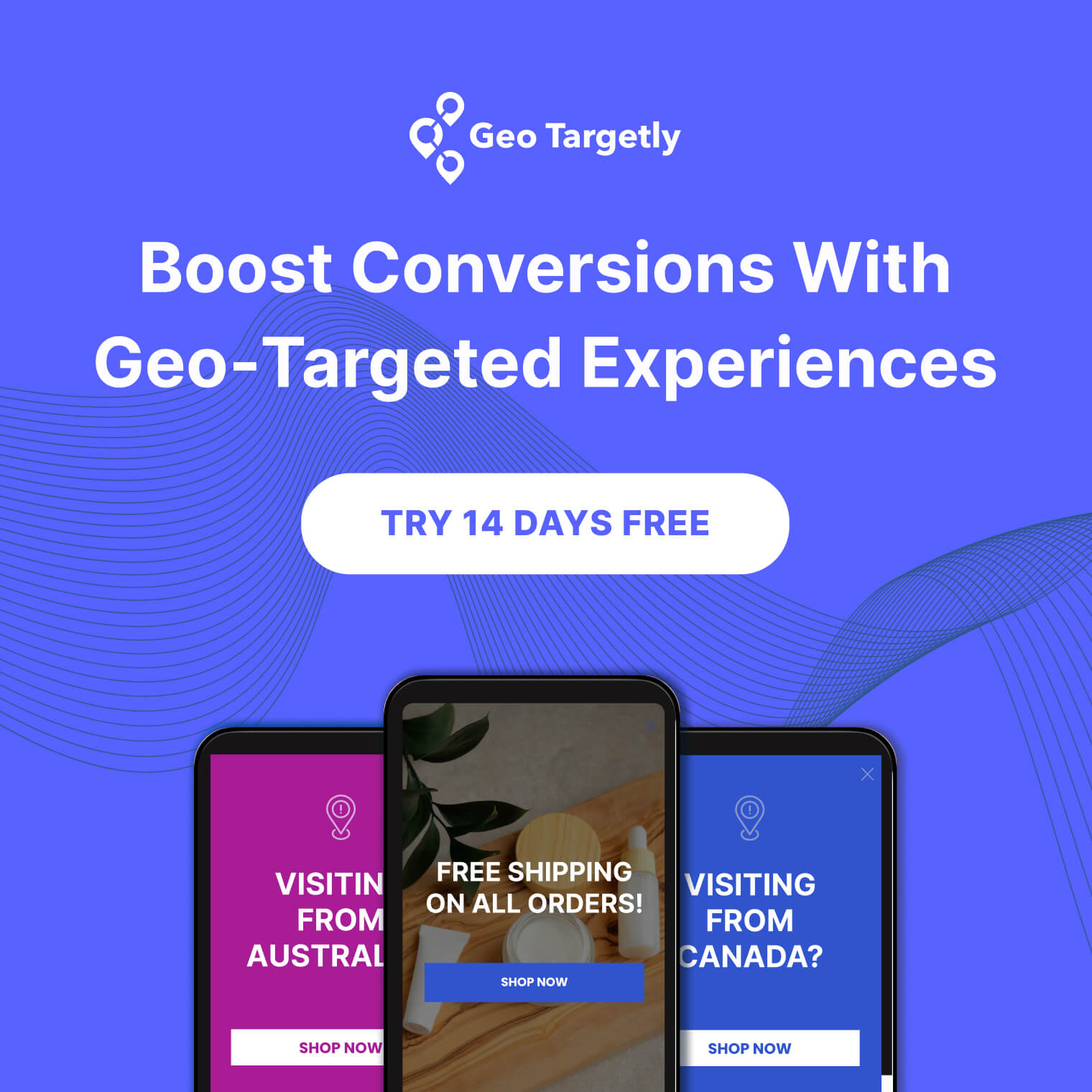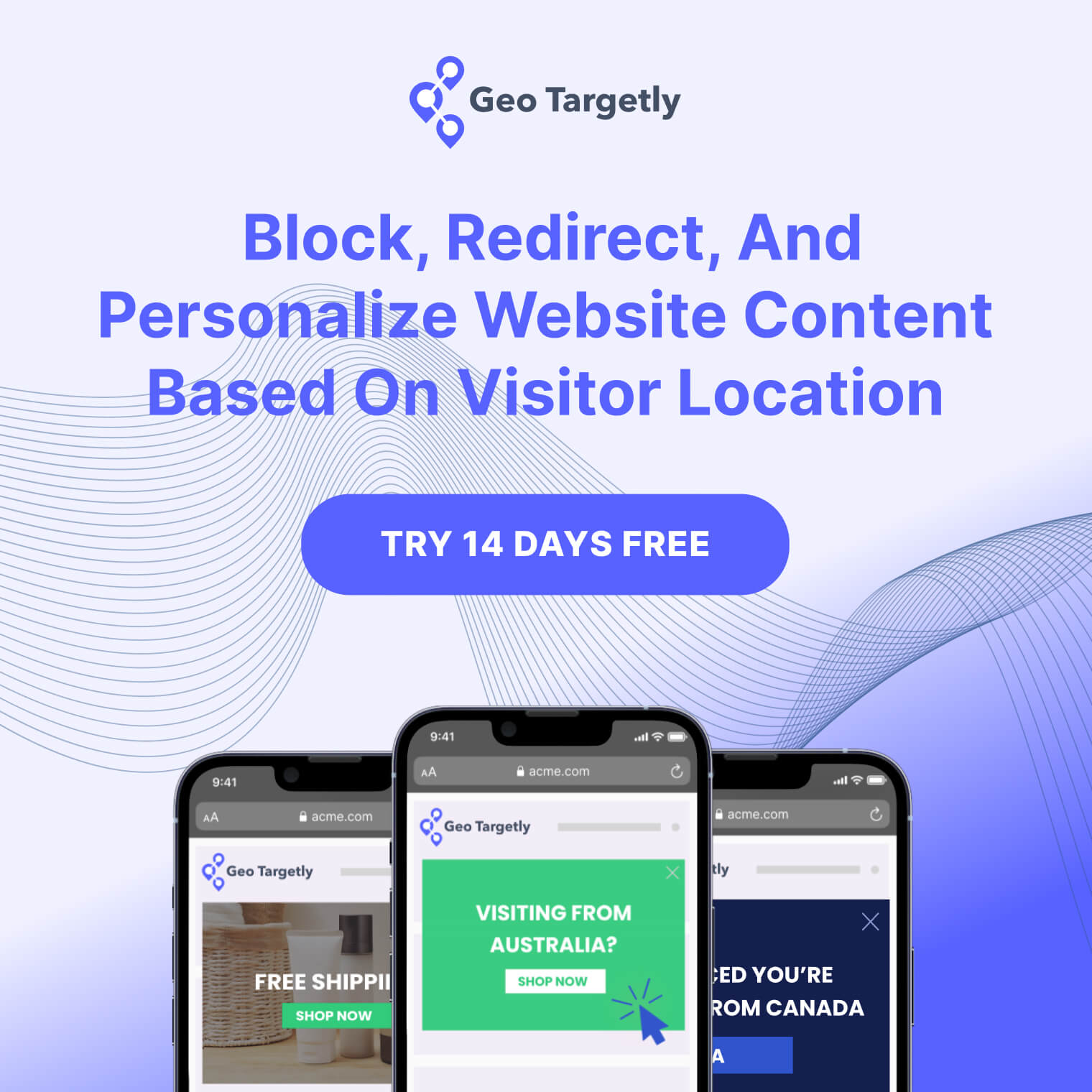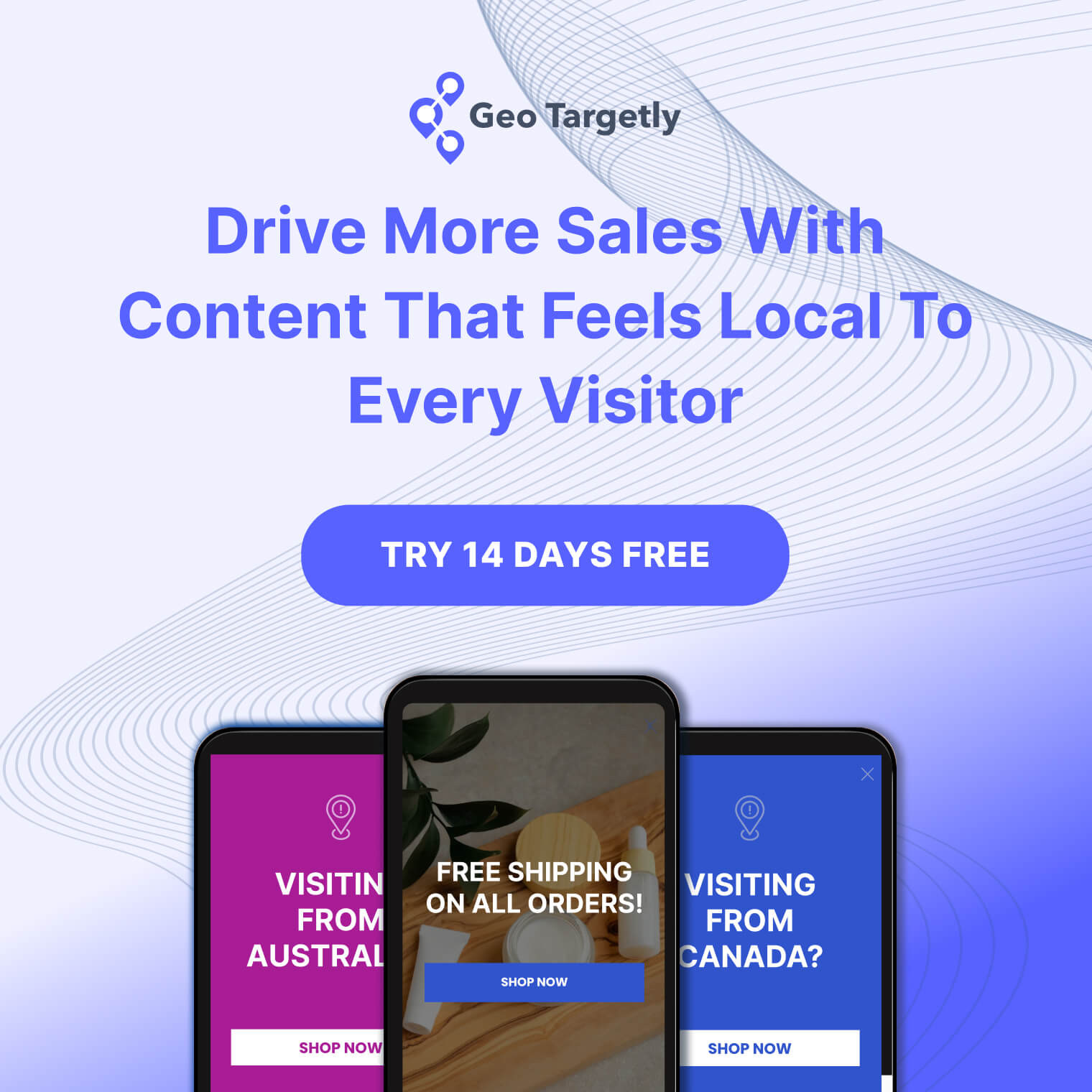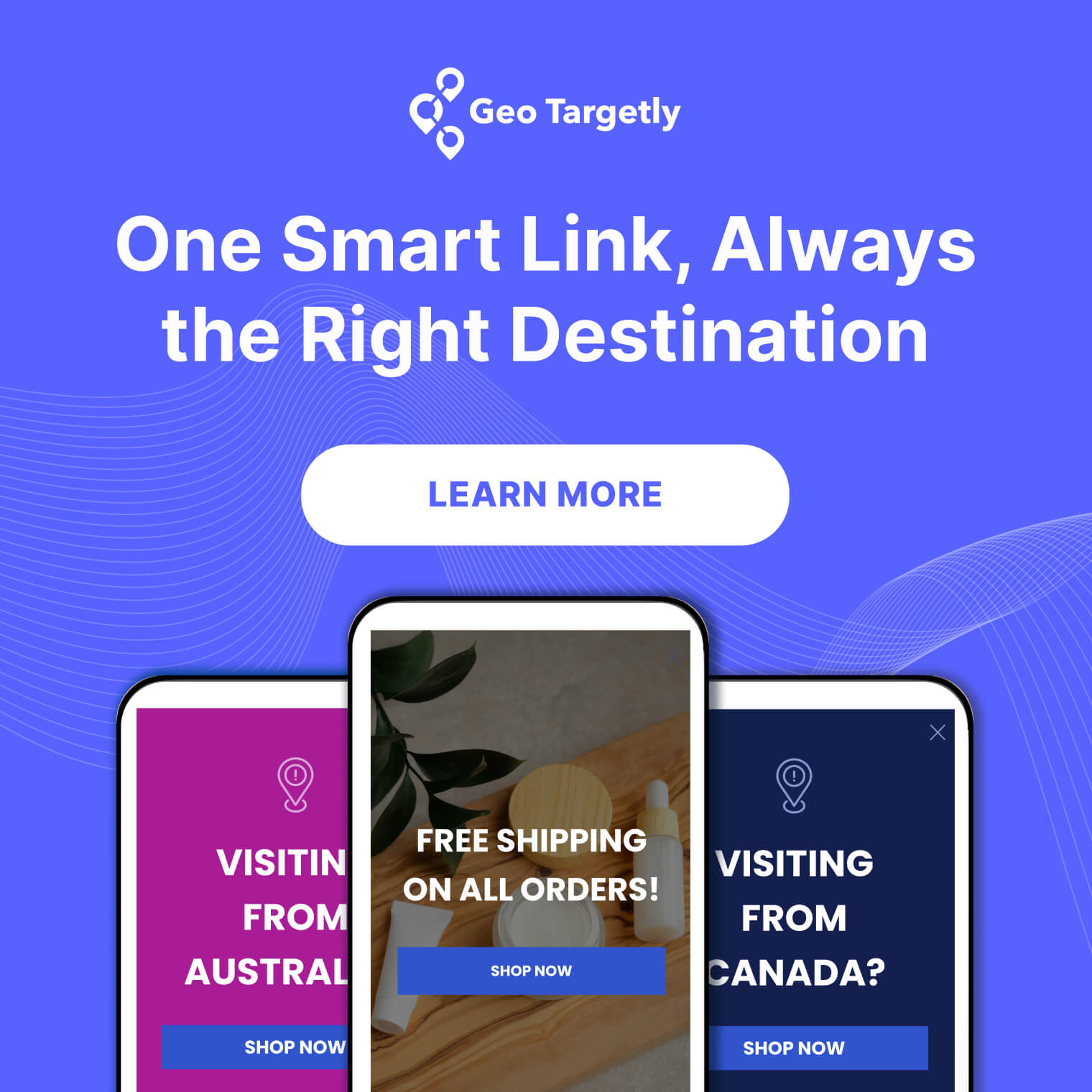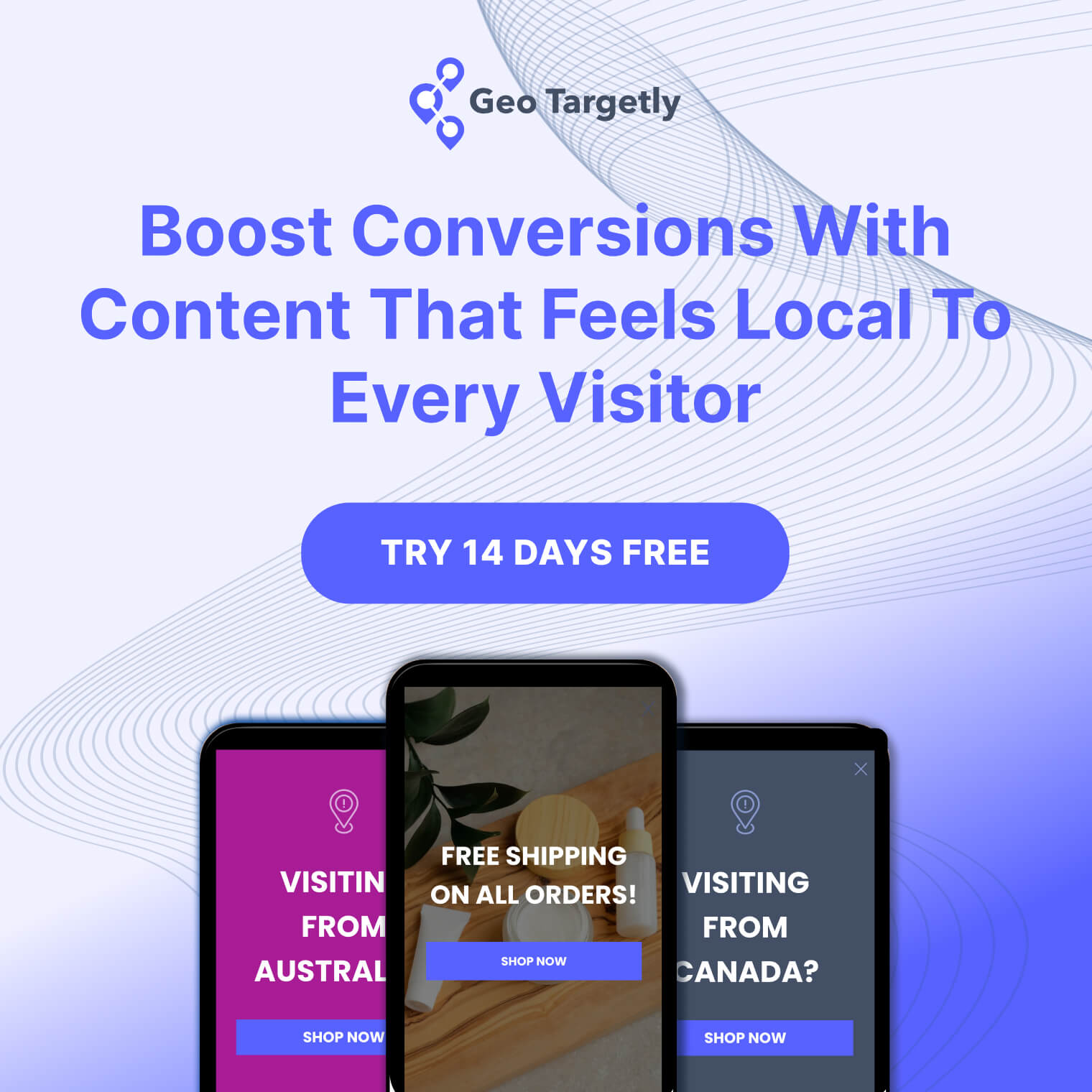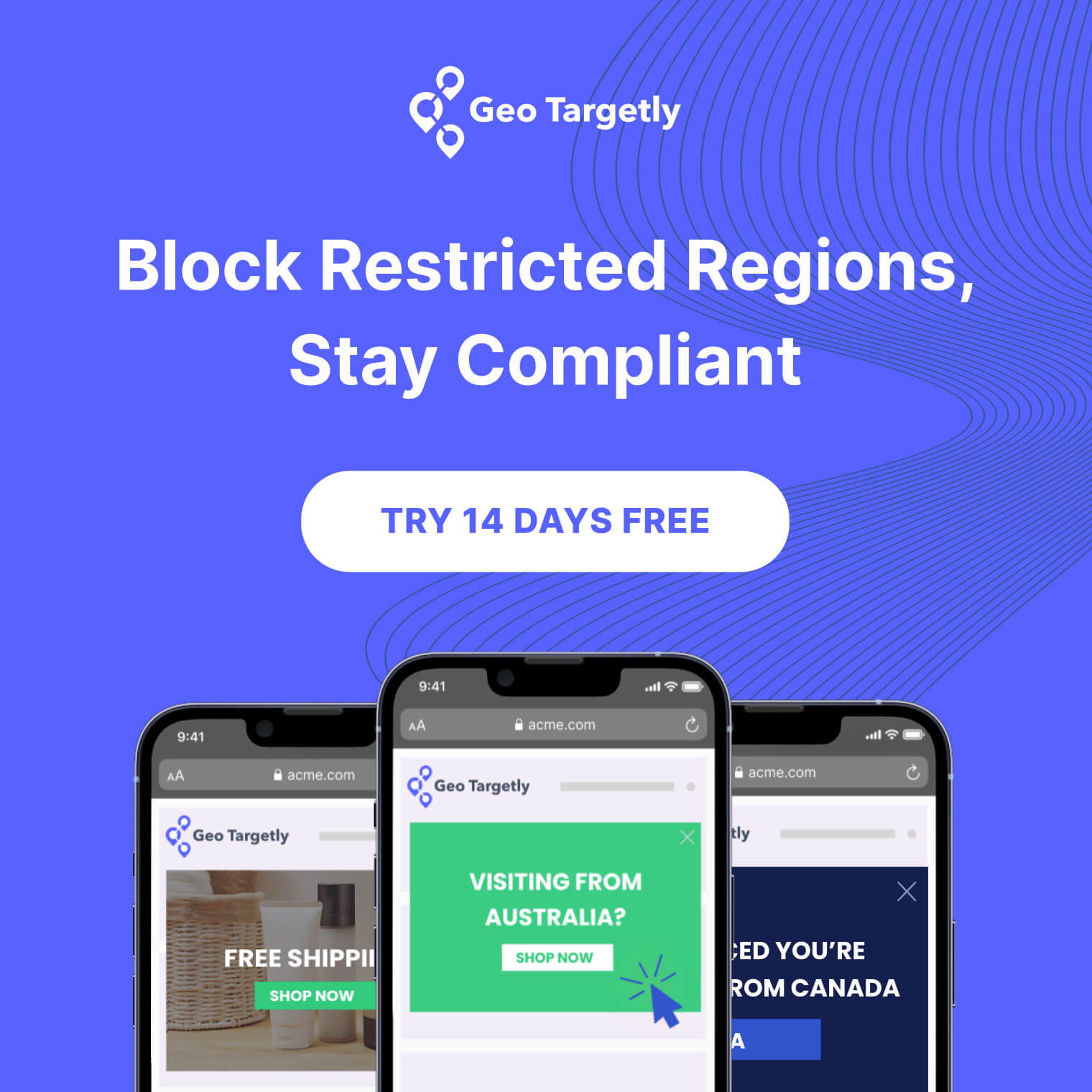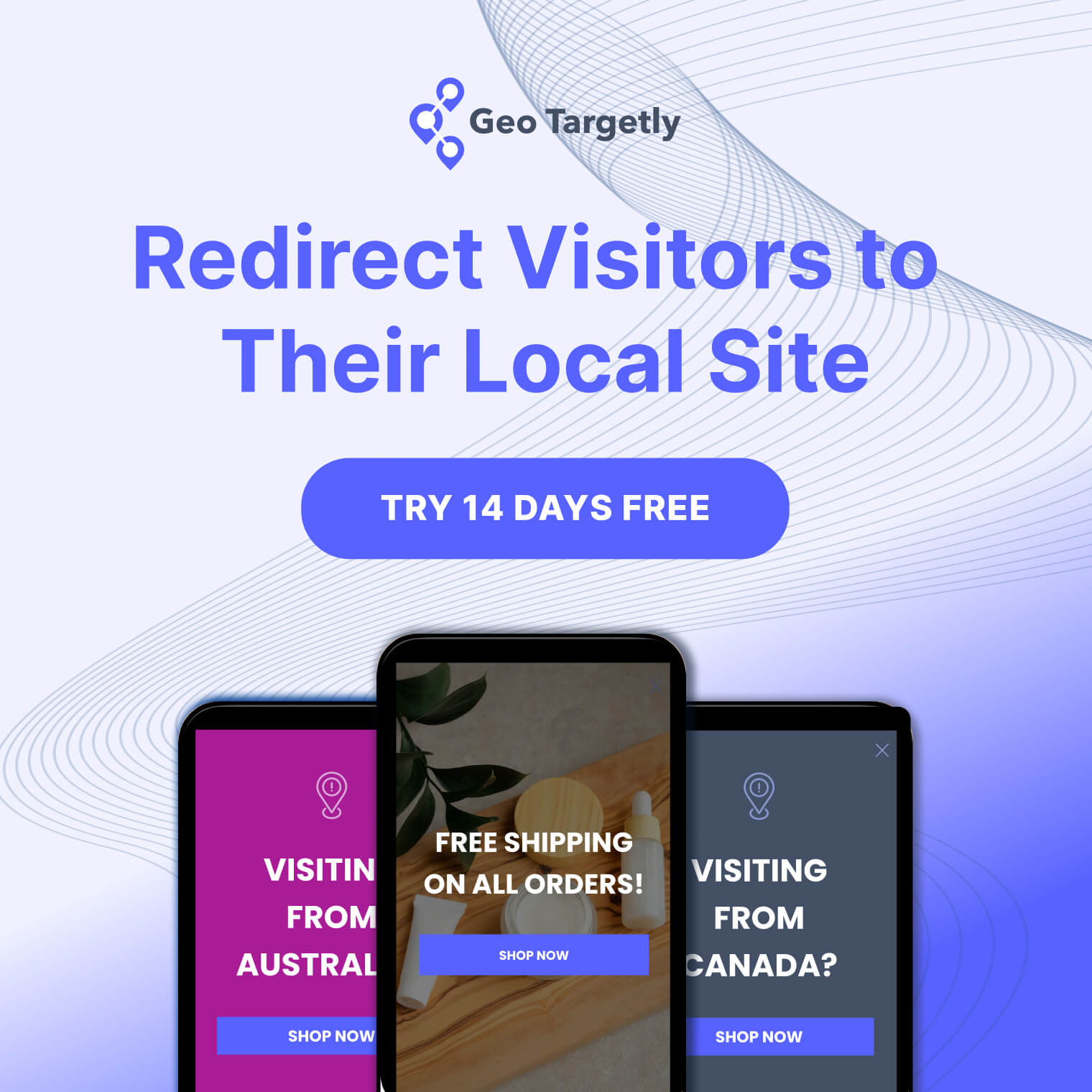

Geolocation advertising has become a powerful tool in the marketer's arsenal, allowing for precise targeting based on a user's location.
Whether you're a seasoned marketer looking to refine and improve your strategies, or completely new to the concept of geolocation advertising, we’re here to provide valuable insights into implementing this technology for more effective and relevant campaigns.
Join us as we navigate the landscape of geolocation advertising and discover its potential to reshape your marketing efforts.
What is geolocation advertising?
Geolocation advertising is a data-driven approach to digital marketing that uses a user's geographic location to deliver targeted and relevant content. At its core, it relies on the integration of location data, often obtained through GPS, Wi-Fi, or cellular networks, to determine a user's precise whereabouts. This information allows marketers to specifically target their advertisements to specific geographic areas, making their campaigns more contextually relevant.
Geolocation advertising goes beyond simple location-based targeting. It considers factors like a user's historical location data, behavior, and preferences to deliver content that aligns with their interests. This personalized approach improves the user experience as well as increases the chances of engagement and conversion.
For example, if you’re getting ads for dog toys in Italy, but you live in Mexico (and you’re allergic to dogs), you’re probably not going to be interested in these ads. Geolocation-based advertising wouldn’t give you these advertisements, and would instead recommend local shops that you may be interested in.
In summary, geolocation advertising uses the power of location data to deliver hyper-targeted content to users, transforming the way marketers connect with their audiences, and creating opportunities for more meaningful interactions.
Geofencing
One of the primary techniques within geolocation advertising is geofencing. Geofencing involves creating virtual boundaries around physical locations, such as stores, events, or neighborhoods. When a user enters or exits these predefined geographic areas, they can be targeted with relevant ads or messages on their mobile devices.
When a user's mobile device enters or exits one of these predefined geographic areas, it triggers a response, such as the delivery of targeted advertisements or notifications. This response can be customized to align with the marketing objectives, offering users content that is highly relevant to their immediate location.
Imagine you are a coffee shop owner, and you want to attract more customers to your store located in a busy downtown area. You decide to implement geolocation advertising with the help of geofencing.
You create a virtual boundary, or geofence, around a 1-mile radius of your coffee shop's location. This means that when mobile users enter this predefined geographic area or pass by your coffee shop, their mobile devices will trigger a response.
As potential customers walk within the geofenced area, they receive targeted advertisements on their smartphones. These ads might promote your coffee shop's daily specials, offer a discount on their next purchase, or highlight your freshly brewed coffee.
The key benefit of geofencing in geolocation advertising is that it allows you to engage with potential customers when they are near your business, increasing the chances of attracting foot traffic and boosting sales.
Geofencing technology relies on various location data sources, including GPS, Wi-Fi, cellular networks, and even Bluetooth beacons. These sources provide real-time location information, allowing businesses to precisely target users based on their proximity to physical locations.
Overall, geofencing is a versatile tool within geolocation advertising that empowers businesses to engage with their audience in real time, making it an important asset for marketers across various industries.
While geofencing is an aspect of geotargeting, they are not the same. Learn more about geotargeting vs. geofencing.
Use cases for geolocation marketing
Geolocation marketing offers a wide range of use cases across various industries, empowering businesses to connect with their target audience in unique and contextually relevant ways. Here are some notable examples of how geolocation advertising is being employed:
Retail and businesses
Retailers can use geofencing to send promotional offers and discounts to shoppers when they are near a physical store. This not only drives foot traffic but can also boost sales and customer loyalty.
Event promotion
Event organizers can implement geolocation marketing to inform attendees about event details, schedules, and special promotions as they approach the event venue. This can help make sure that attendees have access to up-to-date information, even when they aren’t actively searching for it.
Restaurant and food delivery
Restaurants and food delivery services can send targeted advertisements and exclusive offers to potential customers within a specific radius of their location, encouraging them to place orders or come by for a visit.
Real Estate
Real estate agents can use geolocation advertising to send property listings and other relevant information to individuals visiting specific neighborhoods or areas of interest. This helps in targeting potential buyers or renters effectively.
Travel and tourism
Tourist destinations can provide visitors with location-based recommendations, discounts, and information about nearby attractions and events. This helps improve the overall tourist experience and promotes local businesses. For instance, a travel agency in France could promote tours to local historical museums or cuisine classes.

Safety and Security
Geolocation marketing is also utilized for safety and security purposes. For instance, parents can receive notifications when their children arrive at school, and businesses can be alerted to unauthorized access to restricted areas.
Automotive industry
Car dealerships can send offers and promotions to individuals visiting nearby car lots, potentially driving them to explore new vehicle options.
Non-profit organizations
Charities and non-profit organizations can use geolocation marketing to raise awareness about their causes and mobilize supporters in specific regions.
As you can see, the applications for geolocation-based advertisements are diverse, and can be applied in many creative ways to engage with your target audience.
Additionally, you can learn more about geolocation marketing by reading our geomarketing guide.
How does geolocation advertising work?
Here's a step-by-step overview of how geolocation advertising works:
- 1. Data collection: The process begins with the collection of location data from users' mobile devices. This data can include latitude, longitude, and sometimes altitude information. Users typically opt to share their location with specific apps or services.
- 2. Data processing: Once collected, the location data is processed and analyzed to determine the user's precise geographic location. Advanced algorithms and technologies are used to ensure accuracy.
- 3. Geofencing: Marketers define virtual perimeters or boundaries around specific physical locations, such as stores, events, or neighborhoods. These geofences serve as triggers for targeted advertising.
- 4. User targeting: When a user's mobile device enters or exits a predefined geofenced area, it triggers the delivery of relevant advertisements or messages to that user's device. The content of these ads can be tweaked based on the user's proximity to specific locations.
- 5. Personalization: Geolocation advertising goes beyond simple location-based targeting. It considers additional factors, such as a user's historical location data, behaviors, and preferences. This information allows marketers to deliver highly personalized content.
- 6. Content delivery: Once the user is within the defined geofenced area, they may receive notifications, offers, promotions, or advertisements related to nearby businesses or events.
- 7. Interaction and Engagement: Users who receive geolocation-targeted content can choose to interact with the messages, whether by clicking on ads, redeeming offers, or visiting nearby stores. This interaction can lead to increased conversions and sales.
- 8. Data analysis: Marketers analyze user responses and engagement metrics to evaluate the effectiveness of their geolocation advertising campaigns. This data helps in refining future campaigns for better results.
Pros and cons of geolocation advertising
As with any marketing strategy, geolocation advertising comes with its own set of advantages and challenges. Let's explore the pros and cons to help you make an informed decision about whether it's the right approach for your marketing efforts.
Pros
- Hyper-targeting: Geolocation advertising allows for precise targeting based on a user's real-time location. This level of specificity can lead to higher engagement and conversion rates. However, some people may see this as a con, depending on how they feel about this type of advertising.
- Increased relevance: Content delivered through geolocation marketing is contextually relevant to the user's immediate surroundings, making it more likely to capture their interest.
- Better customer experience: When businesses provide personalized offers and information based on location, they can improve the overall customer experience, fostering loyalty and satisfaction.
- Improved ROI: The ability to target users who are physically close to a store or event can lead to a higher return on investment (ROI) as it increases the likelihood of conversions.
- Competitive advantage: Using geolocation advertising can set your business apart from competitors, especially in local markets, by offering a more personalized and convenient experience to customers.
Cons
- Privacy concerns: Collecting and using location data can raise privacy concerns among users. It's crucial to be transparent about data collection and usage to build trust.
- Data accuracy: Geolocation data accuracy can vary, especially in densely populated urban areas or areas with weak signal reception. Inaccurate data can result in mis-targeted ads.
- Cost: Implementing geolocation advertising can be costly, particularly for small businesses. It may require investment in technology, data sources, and advertising platforms.
- Overexposure: Users who receive excessive geolocation-targeted messages may feel overwhelmed or annoyed, leading to a negative perception of the brand.
- Resource intensive: Managing geofencing campaigns and analyzing location data can be resource-intensive, requiring dedicated personnel or third-party services like GeoTargetly.
In conclusion, geolocation advertising offers the potential for highly effective and personalized marketing campaigns, but it also requires careful consideration of privacy, data accuracy, and costs. Businesses that prioritize relevance, customer experience, and ethical data usage can harness the benefits of geolocation marketing while mitigating its challenges.

Should you do geolocation advertising?
The decision to incorporate geolocation advertising into your marketing strategy depends on several factors and your specific business goals. These are common considerations to ponder that can help you decide whether geolocation advertising is the right choice for your brand.
Target audience
Evaluate whether your target audience is likely to respond positively to location-based marketing. Geolocation advertising is particularly effective for businesses that rely on attracting local or nearby customers.
Type of business
Consider the nature of your business. Local retailers, restaurants, and event organizers often benefit the most from geolocation advertising. However, it can also be valuable for e-commerce businesses looking to boost traffic to physical stores.
Budget
Assess your marketing budget. Geolocation advertising may require investment in technology, data sources, and advertising platforms. Ensure that it aligns with your budget constraints before jumping in.
Privacy Compliance
Take extra care to ensure that your geolocation advertising efforts comply with privacy regulations and that you have transparent data collection and usage practices. This is crucial for maintaining trust with your audience and avoiding breaking the law.
Resources
Determine whether you have the resources to effectively manage geofencing campaigns, analyze location data, and create personalized content. It may be necessary to allocate personnel or seek outside assistance.
Competitive landscape
Another good practice is to analyze your competition. If your competitors are successfully using geolocation advertising to engage with local customers, it may be advantageous for you to adopt similar strategies.
Marketing objectives
What are your overall marketing goals, and will geolocation help you achieve them? Geolocation advertising can be particularly useful for increasing foot traffic to physical stores, promoting local events, or offering real-time promotions.
Measurement and analysis
Ensure that you have the tools and processes in place to measure the effectiveness of your geolocation advertising campaigns. Regular analysis and optimization are essential for success.
In summary, the decision to implement geolocation advertising should be based on a thorough assessment of your business, audience, budget, and goals. When used strategically and ethically, geolocation advertising has the potential to enhance customer engagement, drive sales, and provide a competitive edge in today's digital marketing landscape.
Conclusion
Geolocation advertising has emerged as a dynamic and effective approach to digital marketing, offering businesses the ability to connect with their audience in ways that were previously unimaginable. By harnessing the power of location data, businesses can deliver highly targeted and contextually relevant content to users based on their real-time whereabouts.
Ultimately, whether you choose to embrace geolocation advertising depends on your unique business goals, target audience, budget, and commitment to privacy and ethical data usage.
When implemented strategically, geolocation advertising can increase customer engagement, and create a competitive advantage in today's dog-eat-dog market.





.webp)










